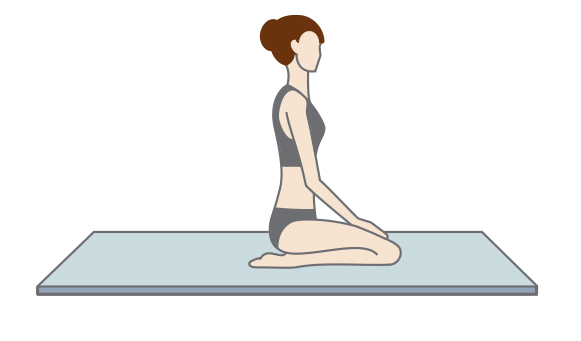
Life in lockdown: exercises to keep your body fit for swimming
With all swim venues now closed and people being ordered by the government to stay at home, it is important to keep your body strong for when you get back to swimming outside in the open water.
Here are SwimforTri‘s Dan Bullock’s top five dry land exercises that swimmers of all abilities will benefit from when they return to swimming after the long break.
1 – Rock pose

To swim well you must be able to point your toes while remaining relaxed through the ankles and lower leg. Not only is it very difficult to produce forward propulsion with your legs if you don’t have sufficient ankle mobility, your feet will also cause a lot of drag and slow you down. The Rock Pose from yoga is an easy way to improve the range of motion in your ankles and can easily be fitted into your daily routine.
- To do the Rock Pose, kneel on a mat and gently lower your buttocks onto your heels.
- Hold for 30 seconds or longer, if comfortable, but note you may get pins and needles if you remain in this position too long.
- Be cautious if you have knee injuries and never force yourself into any position that causes pain.
2. Pilates Swimmer
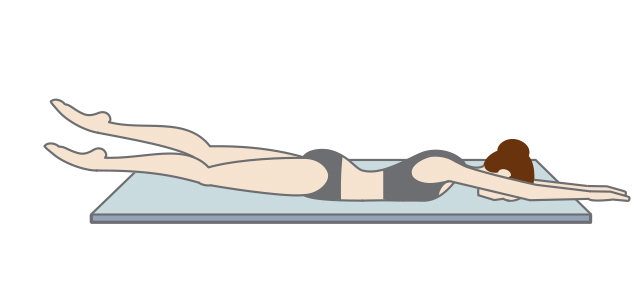
Another common problem for swimmers is “kicking from the knee”. Excessive knee bending is an inefficient way to kick and again causes a lot of drag. To swim fast you need to keep the kick small and the legs streamlined. The problem here stems usually not from a lack of ability to use the right muscles (i.e. the glutes rather than the quads) but a difficulty in controlling and sensing the movement while in the water. The Pilates Swimmer exercise forces you to utilise the glutes and keep your legs straight thus training you to use the right muscles while in the water.
- Lie face down on a mat with your arms stretched forward.
- Try to create a sensation of length along your spine. (In the traditional Pilates Swimmer exercise you would use both your arms and your legs but we will just concentrate on the lower part of the body.)
- Holding yourself strongly through the core, keep your legs straight and gently raise your feet a few centimetres above the floor.
- Initiate a controlled flutter kick motion will keeping your legs straight.
- Start with three rounds of 10 kicks with each leg and try to increase to 20 over time.
3. Straight Arm Plank
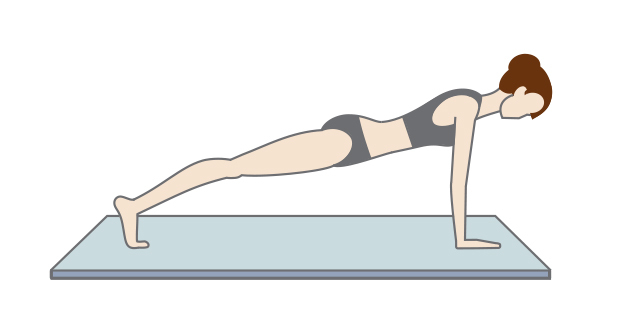
Moving up through the body, the next problem we often find particularly with new swimmers is a weakness through the body’s core. If you watch a strong swimmer in action you will see that movement from the finger tips through to the toes is coordinated and regular. The connection from one end of the body to the other is through the core so it is essential to build and maintain strength here to ensure this coordination is working smoothly. In addition, a strong core helps you to hold your body in a streamlined position and maintain stability as you move smoothly through the water. Regular doses of Straight Arm Planks will help keep you on the straight and narrow.
- The Straight Arm Plank is both simple and difficult.
- Prop yourself into the standard push-up position with hands slightly wider than shoulder width apart, fingers pointed forward.
- Lock your arms straight. Your neck, back and legs should make a straight line.
- The hard part now is to hold that position. Start with 30 seconds and try to increase to a minute.
- Repeat three times
4. Ts, Ys and Is
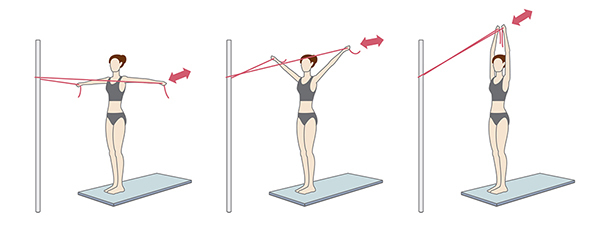
Now moving to the shoulders, which need to be supple yet strong. The shoulders take a lot of strain in swimming, especially if you have poor or undeveloped stroke mechanics. These exercises – done with stretch cords or therabands – help improve stability and mobility. You can also perform the same movements without the stretch cords to help mobility. These movements are particularly effective if you’ve been hunched over a computer for hours and are good to slip into a five-minute break.
- Loop the stretch chords or bands around a fixed point at about shoulder level.
- Take one end of the cords in each hand (with an equal length of cord each side) and stand facing the fixing point.
- Reach out your arms to the side so that your body makes a “T” or crucifix shape. There should be light tension in the cords.
- Now move your hands backwards and forwards through a range of about 10cm.
- Continue for 30 seconds, rest and repeat a total of three times.
- Then repeat with your arms raised into a “Y” shape and finally repeat with your arms pointing directly to the sky with your body in an “I” shape.
5. Draw the Sword
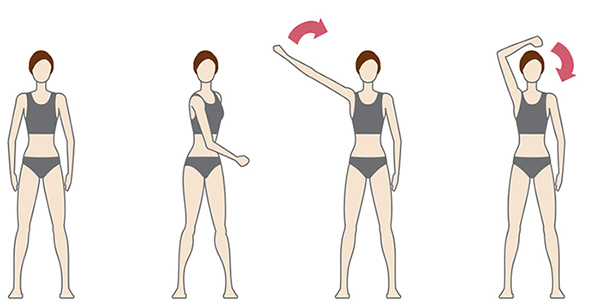
New swimmers often look very stiff in the water, particularly around the shoulders and upper back, while strong swimmers are supple and smooth. Draw the Sword is a straightforward exercise to help improve upper body mobility. It also makes a great pre-swim warm up exercise.
- Start by standing straight in a neutral position with your arms held loosely by your side.
- Now reach your right arm over to your left hip as if you were about to draw an imaginary sword hanging from your belt.
- Allow the shoulder to follow and bring it as close to forwards facing your chin as you can, and also allow your hip to follow the rotation movement.
- Then, in a fluid, smooth movement, pull your imaginary sword from its scabbard and swing it across your body until it’s raised above your head, ready to strike.
- Repeat 10 times and then switch arms.
Dan has been coaching since 1990, holding qualifications with the ASA, BTF, ASCA and the World Open Water Swim Association.
A respected figure in the swimming community, Dan is a Speedo & Vasa Coaching Advisor, and Coach with the London Disability Swimming Club. He regularly contributes to Tri247, Outdoor Swimmer, formerly to 220 and won the coach of the year award 2005 and Triathlon Europe. He created the Virgin Active Swim Club concept ‘Hydro’ and contributed as lead coach to ’Speedo On.’








